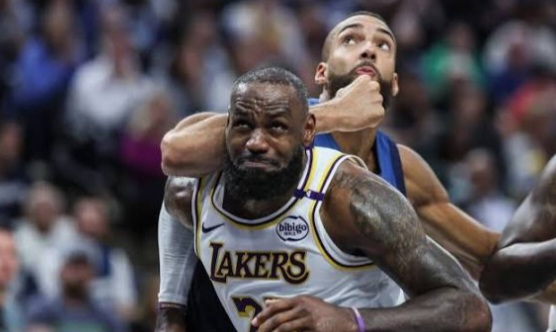On any given day, in any given barbershop, in any given nook and cranny of the vast expanse of the United States, someone is arguing about who the greatest basketball player of all time is. While it’s a fool’s errand to try and convince someone of the “GOAT,” as it were — and doubly so on the internet — one way or another, the act of attempting doesn’t seem to be going out of fashion any time soon. Central to these arguments, alongside one Michael Jeffrey Jordan, is LeBron James, the quadragenarian “kid from Akron” who is on his way, in all likelihood, to a record 21st All-NBA appearance this year. He’s also still, for now at least, on a quest with Slovenian phenom Luka Doncic and the Los Angeles Lakers for his fifth championship ring.
Much has been made of the unprecedented longevity James has shown to get to this point, and it certainly has been used in the LeBron vs. Jordan argument ad nauseam. But one facet that has, in many ways, gone under-discussed when comparing him to any other player of the rarified air he breathes is that LeBron James is not one basketball player. He’s several.
James has approached his NBA career similarly, in some ways, to how Madonna has approached maneuvering the pop music landscape: if you’re constantly evolving, the game can’t pass you by. While much has been made of the hyper-athletic specimen James has been since his nascent NBA career began for his hometown Cleveland Cavaliers, he’s never been satisfied, it seems, with just being one thing. As anything is wont to do given enough time, the NBA and the nature of its game have both changed substantially since he entered the league in 2003. The three-point revolution turned professional basketball on its head, deprioritizing the midrange and paint in favor of outside shooting due to what can be distilled in a simple math equation: three is more points than two. So, in recent years, James honed in on his distance shooting. “I always wanted to have the adaptability and the growth mindset to be able to change with the game,” he told Steve Nash recently on their “Mind the Game” podcast, “where I would still be productive no matter what the game called for.”
He has played and guarded all five positions at some point throughout his long NBA career, and excelled at all of them (even being robbed, some have argued, of the 2013 Defensive Player of the Year trophy that ultimately went to Marc Gasol). That is due, in part, to his unique combination of court vision, basketball IQ, size, and strength. “When you’re 6-8, 250-ish you can set screens, you have the ability to play the five or the power forward position,” Jason Kidd told Fox Sports of James’ versatility in 2023. “But he can play all five [positions], and coach at the same time and help his team win.” Kidd referenced Oscar Robertson and Magic Johnson as other players who had a diverse skill set for their size, but acknowledged that what James can do is, in actuality, just unprecedented. “I think when you talk about LeBron, LeBron’s in his own category.”
This season, as his never-ending evolution continues, LeBron has had to be multiple players in one calendar year. With the Lakers’ offense aiming to be centered around big man Anthony Davis to start the season, much of the facilitation and outside scoring fell in James’ lap. When Davis went down with an adductor strain in January, the task of carrying the team through an important stretch of the schedule as its main source of offense, and the captain of its defense, was taken on by the 40-year-old with no issue. And ultimately, with the shock swap of Davis for Luka Doncic in early February, James had to become something else entirely. The Lakers desperately needed a defensive engine, and someone to generate good offensive looks became substantially less valuable with the arrival of Doncic, one of the best offensive creators and shotmakers in the league.

